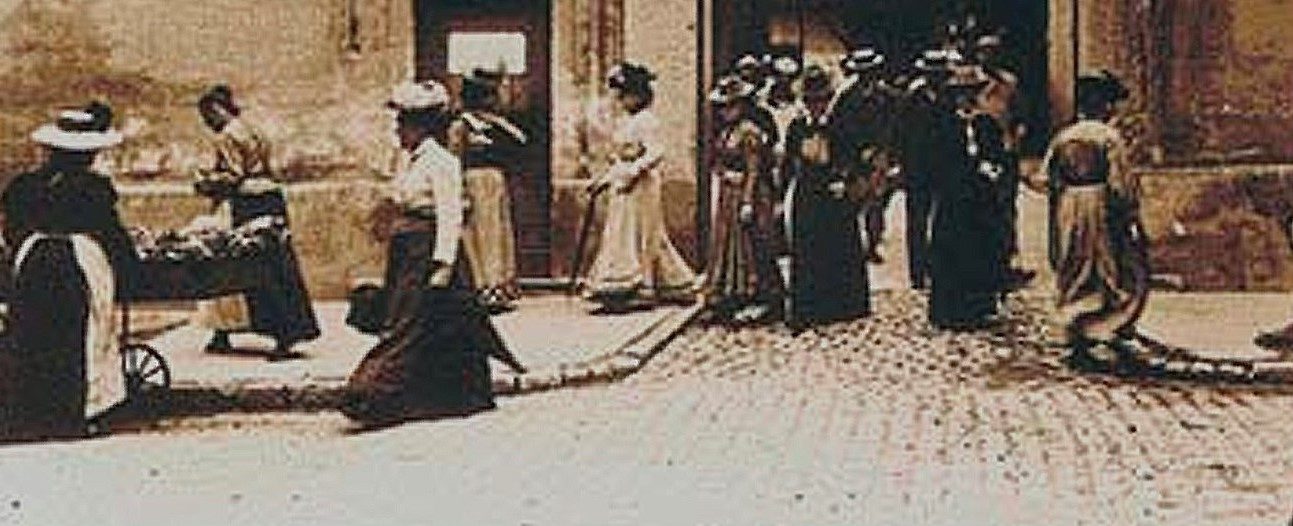United States, 1971
Directed by Dennis Hopper
With Dennis Hopper (Kansas), Stella Garcia (Maria), Don Gordon (Neville), Tomas Milian (the priest), Roy Engel (Harry Anderson), Julie Adams (Mrs. Anderson)

A young American, Kansas, who has settled down in a village in a lush corner of Peru gets hired as a horse wrangler in a movie set built nearby for a low-cost western production. The experience leaves him dissatisfied and instead of dreaming about filmmaking, he resumes a life that seems about loitering around either with his native-born partner Maria or his American pal Neville, devising eccentric plans to get richer while his current way of making money is murky (and does not yield much). But he gets entangled in an extraordinary adventure when the village’s priest asks him for help to stop the villagers from fooling around in the strangest and most rambunctious manner: the peasants pretend making a film of their own, using the props left by the American crew and crafting from wicker replicas of the devices used for shooting, from cameras to booms – and it becomes distressingly clear that Kansas could well become the collateral victim of their carnivalesque game.
From this thin plot exploring the idea that the very act of shooting a film cannot leave undisturbed the place and people involved, and that cinema has a real effect on life beyond the satisfaction of watching a fine movie, director Dennis Hopper shots a fiendishly convoluted and scattered narrative covering much ground.
There is first the shooting, but mixed with the “real” shots the departed crew managed to take, then the slow descent into joyful chaos of the village, with the stern priest turning from being a fierce opponent of his flocks’ dangerous admiration of the moving images and the violence they contain to becoming a glad and carefree supporter of the fake crew’s effort, eager to convince a reluctant and worried Kansas to take part, and finally episodes of the personal life of the lead character, many of them coming from a recent past, depicting his tormented relationship with Maria but with a long focus on one lustful encounter with wealthy Americans who have also settled down in the region, the Andersons – with the man, Roy, liking to splurge his money on dubious entertainments but remarkably cautions when it comes to invest it (as Neville would learn when he tries to get backing for the exploitation of a little, remote gold mine) and the woman, whose first name remains unknown, seeking dubious sexual thrills.
The film’s editing willfully breaks up linearity in order to craft a jigsaw puzzle, a business which turned out to be rather hard to wrap up, with Hopper spending endless months toying with many possibilities as he delves into the endless reels he shot. It takes quite a time to grasp all the narrative’s strands and understand how deeply past and present have been intertwined, with key moments thrown in the film in a bold and disorienting order (Maria’s recruitment into the fake shooting occurs at the very start, even before the American crew’s work has even been shown while the travel deep in the wild of Kansas and Neville to the gold mine is edited well after everything was said and done about it and even after the peasants’ fiesta).
It seems that the visually stunning psychedelic moments of cinema that engulf the two anti-heroes near the end of Hopper’s landmark debut feature “Easy Rider” (1969), in the wake of another fiesta (the New Orleans Mardi Gras) have simply been taken up to a higher level and wider scale: the film as a deliberate mess of a film capturing an existential angst confronted with chaotic, crazy, and carnal situations within and without the personal life. Kansas is both the subject of a hectic story of an unlucky and lousy drifter and the nexus between the mess of life and the struggle of cinema to give a meaning. That struggle translates into the tension between the messy shooting of a mediocre, hackneyed narrative and the zeal and enthusiasm of the poor villagers to get a grip on the ways and means of a cinematic creation. Playing a part in both is a horrifying experience for Kansas but looks each time the exit door from a life that is a dead end, squandered as it is by senseless debauch and futile scheming.
There is the possibility of handling “The Last Movie” as a metafictional jumble reflecting Hopper’s own zeal and enthusiasm to make a film despite being under pressure and doing it on the fly, as it seems. Hopper, who wrote the screenplay with Steward Stern, claimed he played the role of Kansas for it was far simpler to get what he wanted on the screen by just doing it himself, fueling even more the impression the film is just about his personal state of mind, or rather his take on the state of things as far American cinema circa 1971 is concerned. Displaying both a gorgeous cinematography (thanks to his director of photography László Kovács who already worked with him for “Easy Rider”) and a collection of amazing though slightly disturbing performances (plus the cameos of such big names in the trade as director Samuel Fuller, actor Dean Stockwell, or key grip George Hill), the film nevertheless discombobulates as it relishes the mess it creates, with scenes looking like glaring provocations thrown in the face of the audience (especially Mrs. Anderson’s perversions), and not always well paced. Yet many images stick on the mind, and the questions they raised keep it busy. The film remains a bold, fascinating, and early attempt to break narrative codes so dear to the producers and audience of the United States (both were of course spooked by the film, leading Hopper to stay away from Hollywood for quite a time, while “The Last Movie” got disregarded for a long time).

